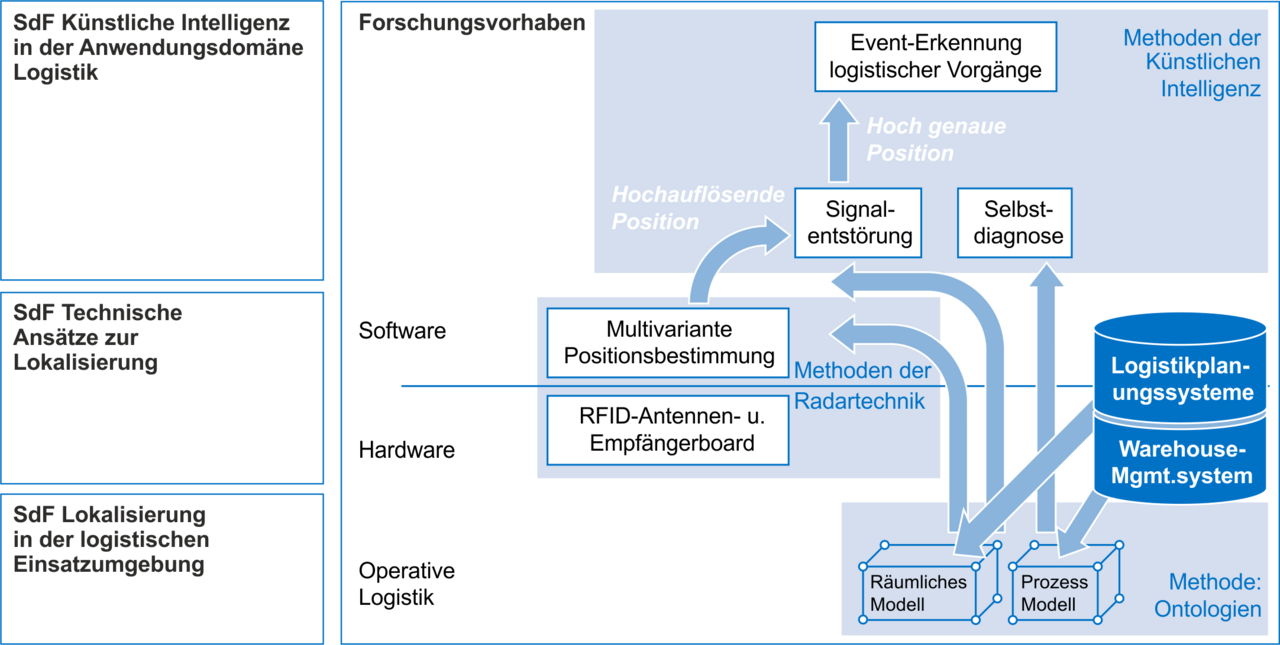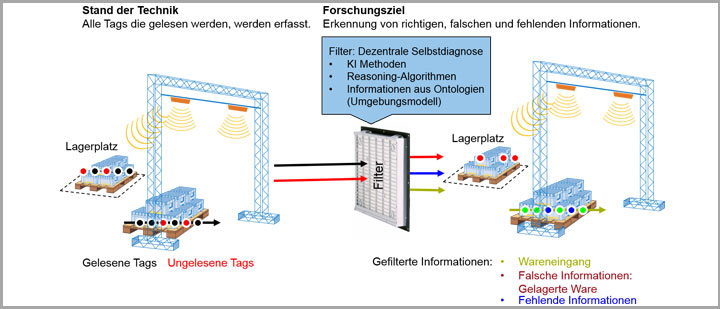High-frequency technical evaluations and procedures make it possible to locate objects marked with RFID. In the IntelliREAD research project, an intelligent RFID reader is being developed which, in addition to the multidimensional location of objects, is capable of linking the captured location information with stored models of the environment and processes. This makes it possible to identify the logistical processes themselves and to use the transparency gained in this way to increase process efficiency.
Applications of RFID-based object identification have found numerous implementation in the industrial environment in recent years, especially in production and logistics. The possibility of storing more than just the pure data for identification on the radio data carriers can be used to link material and information flow and thus to increase process transparency. At the same time, identification linked to location information already allows objects to be located in the sense of tracking and tracing. In addition to these advantages, the use of radio technologies as a basis for identification even opens up paths to higher resolution multidimensional localization. This aspect is of particular interest with regard to future developments in the context of industry 4.0, since position determination in space is considered to be one of the pioneers here.
Through an interdisciplinary cooperation of research facilities of the RFID User Center Munich, a system for multidimensional positioning by means of passive RFID technology is developed in the research project. Not only the technical possibilities of radio location are exhausted, but also methods and algorithms from the field of artificial intelligence (AI) are applied in connection with highly up-to-date environmental and process models to improve the localization results. The resulting high-resolution localization data enable the flexible identification of events in the logistic process and result in an additional increase in transparency in logistic processes. This is illustrated schematically in the figure above.
Several subgoals can be derived from the overall goal of the research project:
-
Development and application of ontologies for reliable and precise modelling of the environment and the predominant processes
-
Development of a multi-variant position determination system for passive UHF RFID transponders
-
Improving the quality of localization results through self-diagnostic capabilities
-
Development of AI methods for the analysis and evaluation of the additional data gained to increase transparency in associated logistics processes.
A schematic representation of the target system for the research project can be found in the figure below.

The procedure in the project essentially consists of the following steps:
- Definition of requirements and scenarios for the target system
- Design of a basic software architecture for mapping the system
- Design of data-based modelling of prior knowledge
- Conception of multivariate position determination
- Development of the required hardware platform and antennas
- Function development for signal suppression and self-diagnosis
- Implementation of event recognition for logistical processes
- Evaluation of the results through demonstrator implementation
